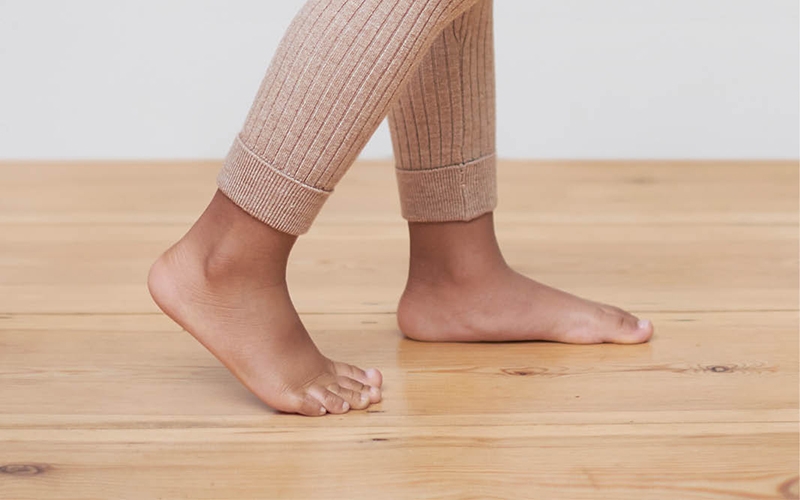
If you’ve noticed a less than fresh odour in your children’s shoe cupboard, you’re not alone. Everyone’s feet sweat, but some kids have sweatier feet than others.
You’ll notice it most in summer, on those hot, sunny days, and of course after sports or prolonged physical activity. Synthetic socks and footwear can also cause excess sweating. One of the other causes of sweaty feet is a common condition called hyperhidrosis - where sweat glands in the feet are overactive.
Read on to find out more about tackling sweaty feet in children, so they can stay comfortable whatever they get up to.
In most cases, sweaty feet aren't anything to worry about. We all perspire, and feet are a common place to experience excess sweat - especially on those hotter days. Sweating is a normal part of the body’s thermoregulatory processes, where perspiration is produced to help you cool down. We’re all different, and some people sweat more than others.
However, there are situations where sweating too much can cause problems. It can be embarrassing, especially in public or if your child is of school age. This is mainly because of the unpleasant odour emitted from feet or shoes when a person’s feet have been sweating a lot. It can be uncomfortable too, and disrupt everyday activities that your child enjoys. It can also affect your child’s health, causing fungal infections or other issues.
To prevent these problems, there are steps you can take to care for your children’s feet and keep them healthy. Here are some tips to try if your child is experiencing excessively sweaty feet:
If you think your child might have hyperhidrosis, it’s probably a sensible step to make an appointment with your GP. They can recommend treatment options and deal with any fungal infections, or refer you to a podiatrist for more specialist help.
Unfortunately, another problem caused by overly sweaty feet is an increased chance of developing blisters. If the skin is constantly moist, this can create higher levels of friction between the feet, socks and shoes. This can cause what are known as friction blisters. These can be very painful and uncomfortable, with healing sometimes taking longer than normal due to the feet being overly moist.
In very severe cases, waterlogged skin can become weakened. This can cause something called maceration, also known as ‘trench foot’. This can look like blisters, but this condition also causes skin to look very pale and wrinkled. Needless to say, this is something that should be checked out by your GP as soon as possible.
Sweaty feet can also lead to fungal skin infections such as athlete’s foot. Also known as tinea pedis, this is an infection which often starts in between the toes. If your child has an itchy, scaly rash in this area or anywhere else on the foot, it’s likely to be athlete’s foot. Other common symptoms include inflamed or peeling skin, burning or stinging, as well as blisters.
Athlete’s foot is common in people with excessively sweaty feet, especially if they often wear tight-fitting shoes. The moisture and humidity can encourage the growth of fungi called dermatophytes - these are the same fungi which cause ringworm.
.This is why it’s so important to keep feet clean and dry, and choose looser fitting socks and footwear made from breathable materials.
Athlete’s foot isn’t just uncomfortable for your child to live with. It’s also contagious, spreading between people easily through contact with contaminated floors, towels and shoes. It can also spread to other parts of the body. So, it needs to be treated right away with antifungal products.
Sweaty feet can also lead to other kinds of rashes, which can be unpleasant for your child to live with. A rash associated with athlete’s foot is the most common, but there are other types of rash linked with sweaty feet.
This includes heat rash, which is usually red, itchy and prickly feeling. There may even be mild swelling, along with small, raised spots. It’s caused by excessive sweating, where the sweat glands become blocked - which leads to the rash. It’s common in babies, as they’re less able to control their temperature, unlike older children and adults.
Author: Click Consult, published 09-05-2023.